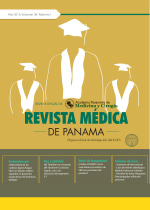Editorial
Autores/as
DOI:
https://doi.org/10.37980/im.journal.rmdp.20211837Palabras clave:
editorial, COVID19Resumen
Ya hace dos años que apareció en China y el mundo el COVID-19, y todos tenemos un recuerdo reciente en nuestras mentes de lo que ha sido esta pandemia, declarada así por lo Organización Mundial de la Salud.
Todos de una manera u otra hemos vivido en carne propia, el tremendo azote de este virus, que no solo ha trastocado la vida familiar, sino que ha afectado la economía mundial y los planes de salud de todos los países del mundo, que han tenido que cambiar bruscamente sus planes en salud, al igual que los recursos para poder afrontar esta calamidad.
Llegaron a nuestros oídos y vivimos la primera, la segunda, la tercera ola de resurgimiento del virus y en la actualidad, en especial los países europeos viven una cuarta ola de ataque de este virus. Y que hablar de las diferentes variantes con las que nos ha sorprendido este tan mutante virus. No se ha ido el efecto de la variante Delta, y ya visita nuestra América la novel variante Ómicron, que está llenando de incertidumbre a los países que se están viendo afectados por la misma.
Personas con riesgo cardiovascular son afectadas en mayor número, no solo se registra un aumento en su incidencia sino también en su prevalencia, y lo que es peor, también en cuanto a la gravedad y fallecimiento que causa entre este particular grupo de afectados, causando arritmias cardíacas, cardiomiopatía y estados procoagulantes, que llevan a estos pacientes a estados terminales. La hipertensión arterial se ha convertido en la comorbilidad más común entre este grupo de pacientes.
Otro grupo de pacientes afectados por el COVID-19, so los que padecen de Enfermedad Renal Crónica, y que están en hemodiálisis o diálisis peritoneal. Estos son pacientes de riesgo, por su condición clínica, entre ellas el hecho de que además de la enfermedad, son en su mayoría adultos mayores, que tienen que viajar, en el caso de los que están en hemodiálisis, 3 días a la semana para recibir su tratamiento, y esto fue así, en los días más severos de la afección por el virus, aun estando en aislamiento total, toda la población. Un porcentaje mayoritario padece de hipertensión arterial, a la que se le agrega la diabetes mellitus en un número importante de ellos. Es conocido que el estado clínico de niveles de azoados permanentemente elevado, produce un estado continuo de estrés oxidativo, al igual que inflamación y disfunción inmunológica, que se van a ver asociadas a complicaciones mayores y mortalidad cardiovascular.
No hay duda, este virus llego para quedarse, como otros que le han precedido. Nos toca aceptar que tenemos que convivir con él. No podemos descuidarnos, todos a vacunarse y a mantener en vigencia estricta las medidas de bioseguridad.
Publicado
Número
Sección
Licencia
Derechos autoriales y de reproducibilidad. La Revista Médica de Panama es un ente académico, sin fines de lucro, que forma parte de la Academia Panameña de Medicina y Cirugía. Sus publicaciones son de tipo acceso gratuito de su contenido para uso individual y académico, sin restricción. Los derechos autoriales de cada artículo son retenidos por sus autores. Al Publicar en la Revista, el autor otorga Licencia permanente, exclusiva, e irrevocable a la Sociedad para la edición del manuscrito, y otorga a la empresa editorial, Infomedic International Licencia de uso de distribución, indexación y comercial exclusiva, permanente e irrevocable de su contenido y para la generación de productos y servicios derivados del mismo. En caso que el autor obtenga la licencia CC BY, el artículo y sus derivados son de libre acceso y distribución.






